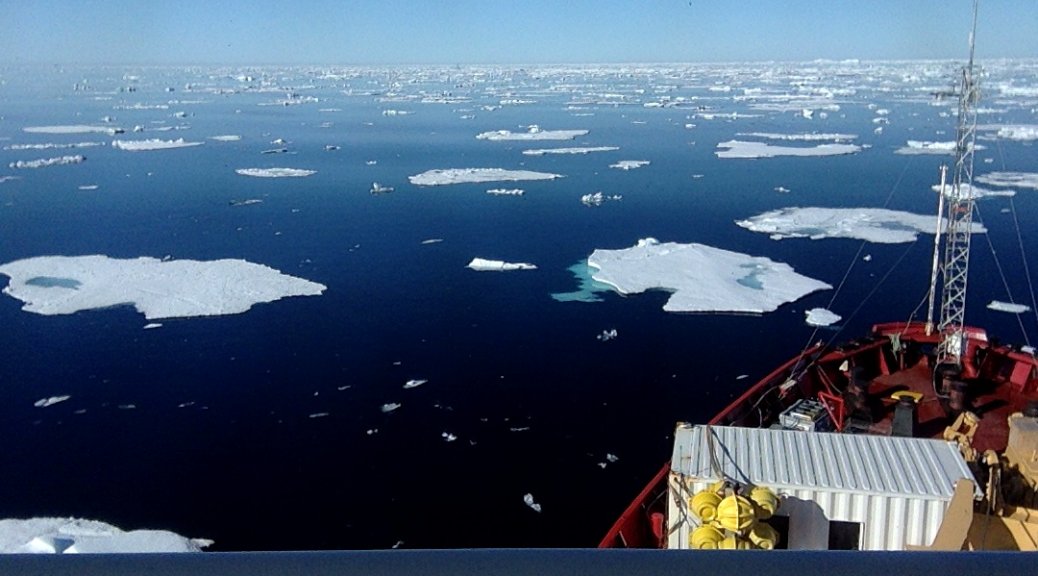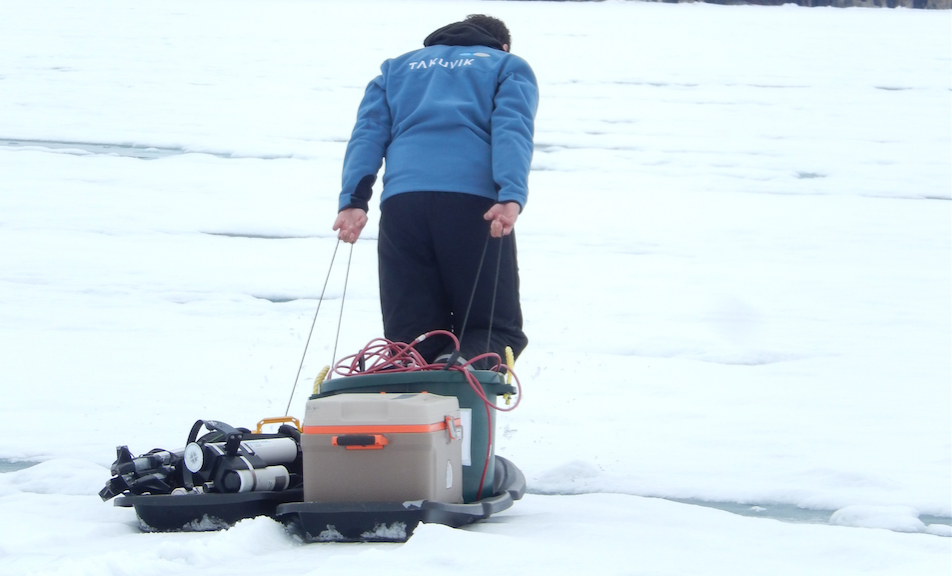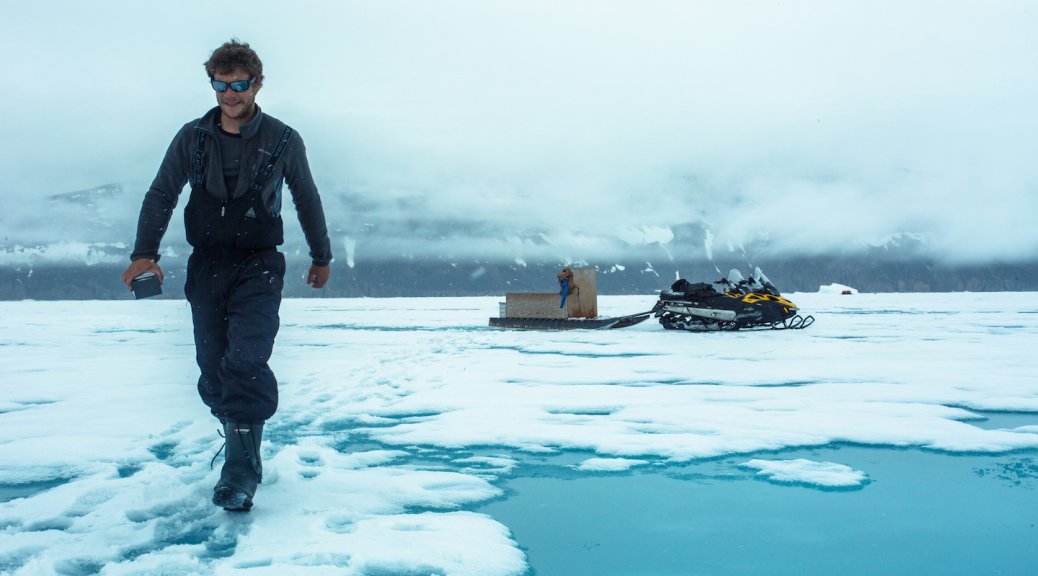On June 12, the Pittsburgh Penguins won the Stanley Cup after an incredible comeback, and Sidney Crosby rightfully won the Conn Smythe trophy awarded to the most valuable player during the playoffs.
The next day, a sediment trap was anchored to an ice floe in Baffin Bay. A second sediment trap was deployed again on the following day. These 2 lines, set to drift with the ice for the following month, were named Sidney and Crosby in honor of the Penguins’ captain. Their drifts became as exciting as the hockey playoffs (at least for me  ).
).
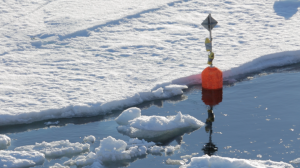
Sediment traps are instruments designed to collect particles that sink from the surface towards the bottom. The sediment traps used during the cruise had 12 cups on a carrousel that rotated every 2 days, therefore collecting particles without interruption during 24 days. These particles mainly consist of algae, fecal pellets produced by copepods, and aggregates of material called marine snow. The continuous collection of these particles at 25 m under the ice during the GreenEdge cruise will allow us to follow the development of the spring bloom and its impact on the carbon cycle.

Sidney and Crosby each had 2 Argos beacons that started to send their positions by email after their deployments. It was expected that they would move south with the ice, as most of the ice in Baffin Bay moves south with the Baffin Current. So I was quite surprised when Crosby started to drift northward after a few days, while Sidney was moving south at a rapid pace. Already this was quite interesting.
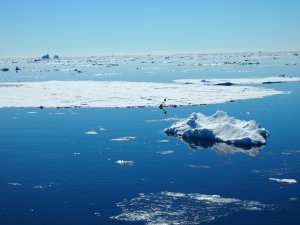
The following weeks were stressful: one Argos beacon on Sidney stopped sending positions, while Crosby was still sending positions but very irregularly. The satellite coverage was not as good as anticipated for the region… It would remain this way until it was soon time for the GreenEdge cruise to end. After regularly annoying the chief scientist, it was finally decided that we would go look for Crosby before going to Qikiqtarjuaq to deliver the Skippy boat. Even though Crosby had eventually moved back towards the south, he had recently started to move north again and I did not want to miss the opportunity to get him back.
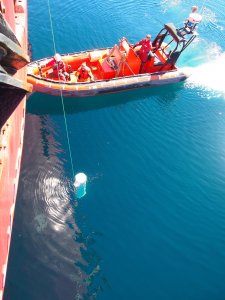
In the early morning of July 11, we were in the area where Crosby had sent his last message a few hours earlier. I did not sleep much that night, I was constantly checking if by chance I would get a new position for Crosby. When I went up to the bridge around 5 am, the captain was already there for the recovery operation. But my stress level went way up when I saw thick fog, icebergs, and so many pieces of ice everywhere… The ice maps made it look as though Crosby would be in an ice-free area, but now it would be like looking for a needle in a haystack 
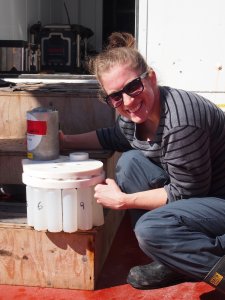
The captain was in a good mood, telling me that the fog would clear up and that we would find Crosby, and sure enough the fog did clear up not long after that. At least things were looking up even though it was still very difficult to look for a small buoy with a mast in all this ice… Among the nearly 20 persons looking for Crosby on the bridge was Stéphane, a deck-hand working the night shift who had decided to stay up that morning to look for Crosby. Well, we all know now that Stéphane has amazing eyesight because he did spot Crosby in front of the Amundsen, way before all of us could see it. The captain confirmed the sight, and everything went very fast afterward. The zodiac was deployed to recover Crosby, who was not anchored to his ice floe anymore, but was resting on the side of one, and we brought him back on the ship. All the stress was gone; this was definitely the best moment of the cruise (at least for me  ).
).
Following the huge success of Crosby’s recovery, it was decided to make a detour to recover Sidney in the middle of Davis Strait on the way back to Iqaluit for the end of the cruise. This time, the location was even more south, surely there would not be any ice left, and it would be easier to spot and recover Sidney. But no. In the early hours of July 12, there was again a tremendous amount of ice in the area where Sidney had sent his last message more than 24 hours earlier. The bad communication of the remaining beacon was critical under these ice conditions. After a few hours, the search for Sidney stopped. Sidney sent a last message the following night, just to let us know that we had been looking for him a few miles west of his current position. And that was the last time that I heard from Sidney. Deploying drifting instruments in the Arctic Ocean is a risky business, and even though I am disappointed with losing Sidney, the recovery of Crosby is a great success.
Back in Québec City, Gabrielle (my NSERC-funded summer student) and I have already started the laboratory analyses on Crosby, who is already giving us amazing results. It will be a nice end to the summer to discover what Crosby will reveal on the temporal evolution of the spring bloom in Baffin Bay.
Finally, I would like to thank captain Alain Lacerte and everyone on the CCGS Amundsen for being an outstanding and fun crew. And last but not least, a million thanks to Stéphane De Broucker for staying up that morning.

